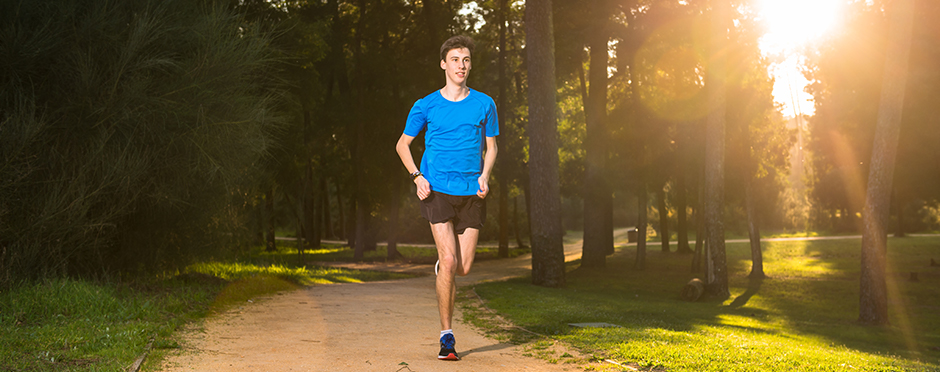
7 Tips to Transition Back to Outdoor Running
Leave a CommentAs the weather starts to warm up, you might be itching to get back outdoors for a run. Outdoor workouts offer both physical and psychological benefits such as helping with depression, anxiety and fatigue.1 Running outdoors is different than running indoors on a treadmill. As such, there are considerations to remember that can ease this transition.
1. Change the Incline
Running on a treadmill is a flat and predictable surface. Outdoor running has hills, inclines, declines and uneven surfaces. Help your lungs, heart and legs prepare for this change by varying the incline during your treadmill workouts. Also remember, there are no hand rails outdoors so try not to use them during your treadmill workouts.
2. Pick a Good Trail
Concrete roads are very unforgiving as they do not offer much in the way of shock absorption. Selecting a running trail with a more forgiving surface can help protect you from the increased impact on your joints.
3. Buy Appropriate Shoes
As mentioned, roads are unforgiving in terms of shock absorption. Make sure your running shoes are suited for outdoor running and are made for this type of impact. Also, shoes should be switched out after 300-500 miles to ensure they are providing the support your foot and body needs.
4. Start with Shorter Runs Outdoors
To help ease the transition back to outdoors after this cold winter, start by moving shorter length runs outdoors. This will help your body adjust to having wind resistance and a different running surface compared to the controlled environment of a treadmill. Gradually increase the frequency and length of outdoor runs until you are at the ratio you want.
5. Start Slow
Your pace on the treadmill is usually not your pace outdoors. And remember, running outdoors is usually not on a circular path. Because of this, you need to start with a shorter route so you don’t find yourself too far from home, exhausted and stranded.
6. Add Ankle Strength and Balance to Your Routine
Outdoor running brings the extra challenge of uneven running surfaces. Your ankles need to be strong and have stability to prevent injury such as ankle sprains from happening. Examples of exercises to strengthen your ankles include balancing on one leg (try closing your eyes if that’s easy), performing calf raises, walking on your heels and balancing with one foot in front of the other in tandem.
7. Don’t Forget to Stretch
Dynamic stretching prior to workouts can increase your range of motion, flexibility, and get your circulation going. In this way, the muscles are better prepared for the repetitive movement of running. Examples of dynamic stretches include: lunges, high knees, butt kicks, arm swings and leg swings. Stretching after workouts can also help with flexibility and muscle recovery. Static stretching has been shown to be beneficial after workouts. Static stretches include seated hamstring stretches and calf stretches.
Running Through the Summer
Should pain or injury occur during your transition to outdoor running, make sure to schedule an appointment at your nearest Athletico clinic so our experts can help you feel better and keep you running all summer.
Athletico offers Free Assessments in-clinic or virtually through our telehealth platform. Request your free assessment using the button below.
The Athletico blog is an educational resource written by Athletico employees. Athletico bloggers are licensed professionals who abide by the code of ethics outlined by their respective professional associations. The content published in blog posts represents the opinion of the individual author based on their expertise and experience. The content provided in this blog is for informational purposes only, does not constitute medical advice and should not be relied on for making personal health decisions.
References:
1. Thompson coon J, Boddy K, Stein K, Whear R, Barton J, Depledge MH. Does participating in physical activity in outdoor natural environments have a greater effect on physical and mental wellbeing than physical activity indoors? A systematic review. Environ Sci Technol. 2011;45(5):1761-72.
